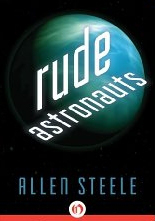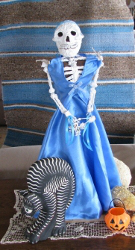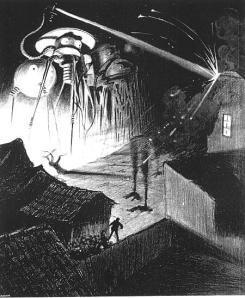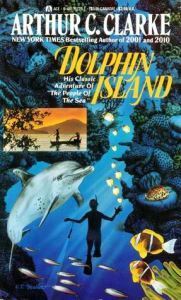Kate Rauner's Blog, page 103
November 23, 2013
How do you change your mind?

Janus – Roman god of change
“When thinking changes your mind, that’s philosophy.
When God changes your mind, that’s faith.
When facts change your mind, that’s science.”
I ran into a couple neat web sites recently when I was looking into why people change their minds.
Kirstyevidence has a thoughtful list of reasons why scientists change their minds: http://bit.ly/NkfVAn Edge.org asked this very question of scientists and technologists a few years ago. The quote at the top of this post comes from their site. The answers are still interesting: http://bit.ly/N2E5yD
When scientists change their minds, they are applauded. As Carl Sagan said, “In science it often happens that scientists say, “You know that’s a really good argument; my position is mistaken,” and then they would actually change their minds and you never hear that old view from them again. They really do it. It doesn’t happen as often as it should, because scientists are human and change is sometimes painful. But it happens every day. I cannot recall the last time something like that happened in politics or religion.
Maybe in politics or religion, people won’t publicly admit to changing their minds for fear of being called hypocrites. Politicians especially are eviscerated for changing their minds: they’re traitors or cynically following public opinion polls. While skepticism in politics is warranted, I hope we don’t all turn into cynics.
I wonder why people become so defensive about positions they pick up from others. After all, you didn’t say the world was going to end in 2012, or Mars would appear the size of the full moon, or tapping the side of a soda can prevents it from foaming over when opened. (BTW, Snopes.com is a great site to check out such stories http://bit.ly/b4d7BS) A group of my friends once assembled to test a statement made by someone on the local web forum that you can pop popcorn with cell phones. We reported back that the phones failed to pop the corn and the lady who had posted the item left the forum in a huff. Why was that?
I believe knowledge is better than ignorance and fact is better than error. I try not to get too emotionally invested in any one position. That way I can be happy when I’m proved wrong because it gets me closer to the truth.








November 20, 2013
Platypusology – a poem by Kate Rauner
Victorians called her primitive,
A mammal under-done,
Chimera of cold austral streams,
Life’s ladder, on a lower rung.
With lizard bones and otter fur
That’s waterproof and soft as silk.
Laying eggs as lizards do,
Then nursing babes on milk.
She hunts her prey in bottom mud
With tactile snout exquisite;
More delicate than human touch,
She senses nerve cells with it.
Life branches out a thousand ways,
Ignores our human urge
For categories neat and trim.
Nature’s on a splurge:
Formed a creature that’s most elegant,
Beauty’s her attraction.
Admire now the platypus,
A honey of adaption.
Inspired by Stephen Jay Gould








November 16, 2013
Rude Astronauts – Science Fiction Book Review
 “Rude Astronauts” is a collection of short stories written by Allen Steele between the mid-1980s to early 1990s, so there are a few anachronistic bits of technology. The note about the author gives a good idea of the elements you’ll find in these stories: Steele was a journalist whose work took him to the Kennedy and Johnson Space Centers, he lives in New England, and collects vintage science fiction.
“Rude Astronauts” is a collection of short stories written by Allen Steele between the mid-1980s to early 1990s, so there are a few anachronistic bits of technology. The note about the author gives a good idea of the elements you’ll find in these stories: Steele was a journalist whose work took him to the Kennedy and Johnson Space Centers, he lives in New England, and collects vintage science fiction.
The stories offer a range of topics and styles; the “rude astronauts” of the title make only a cameo appearance. The antics of construction crews on space structures are the most comical (though I bet these could have been set in the Antarctic or on the sea floor just as well), there is a more serious space adventure, a spy thriller, and some less personal, third-person stories that read like history. (These are just the sort of stories that worm their way into my brain, confusing my memory of truth and fiction.) His “alternate history” stories are my least favorite: The plots don’t depart far enough from real history to be striking.
Overall I liked the collection, though I doubt I’d read the book twice.








November 13, 2013
Am I Me? A Poem by Kate Rauner
Am I Me?
There are membranes in my cells
That limit-bound my organelles.
One carries DNA remote.
Yes I am eukaryote.
I hold ancient seas inside
So in a brackish brew reside;
A chordate, backbone, and I breathe.
Yes, I am fish from ancient seas.
I swing my arms to move about,
With forward eyes in shortened snout.
I have flattened finger nails.
Yes, monkey with a remnant tail.
A harder question than these three:
What does it take? To be me?
A question I face every day
And hope to answer my own way.








November 9, 2013
If You Can Build It, Will They Go?

An indoor stream at The Venetian – thanks to FASTILY
3-D printing may be a huge advance for space travel. On long-distance missions (maybe like travel to Mars) it will be easier to carry a printer than loads of spare parts. http://bit.ly/RVAn0z If the material can be made to flow through the printer head, things as various as food and buildings could be printed. http://bit.ly/1eTSKic

Indoor garden at the Bellagio
The need to haul huge amounts of stuff to Mars always seemed to me to preclude colonization. People will go crazy trying to live in little boxes, so the ability to keep building more and more living space seems crucial. Printing buildings from the dust of Mars would be a perfect solution; along with printing the solar panels and interior lighting needed to make underground living enjoyable. I envision habitats like the shopping malls inside fancy Las Vegas casinos (except with living space and practical little shops instead of haute couture) designed to mimic old European villages with winding streets and blue-painted ceilings to avoid claustrophobia. That would be a cool setting for a science fiction story.
I’ll look forward to 3-D printing experiments on the Space Station. It’s not clear to me they can print parts of mixed plastics and metals yet, so there may be a way to go before we can really print “replacement parts” for machines.








November 6, 2013
We Are Made – a Poem by Kate Rauner
We Are Made – a Poem by Kate Rauner
Up, up, and down,
Quarks in a cloud
Are bound.
Quiescent, they coalesce; ignite;
Balance heat and mass;
Warm to yellow-white.
Proton, proton, proton chain,
Dense enough at zero age.
Ashes sink in orange flame.
Now expanding, heating more,
Bright red shell,
Collapsing core.
Until explosion, flares away
The nebula; all that remains
Cooling dim and gray.
It will coalesce again
“We are made
Of starstuff” says Carl Sagan
With thanks to Hertzsprung and Russell

Eagle Nebula NASA








November 5, 2013
Good Luck Mangalyaan – on its way to Mars

With today’s launch of its Mars orbiter Mangalyaan, India is poised to join the United States, Europe, and Russia in interplanetary space. Don’t be too disappointed if there are problems; of forty missions launched from Earth to Mars, only twenty-three have succeeded.
India’s importance in science and technology will only grow over time. For many years, Indian students have come to America to attend universities. Since I am from a small town, I didn’t meet my first Indians until I was in college. Hearing an Indian accent still reminds me of college. I included an Indian space mission in my science fiction book Glitch. (You can read a description here and an excerpt starting here , but the Indian mission is farther into the book than the excerpts take you. Click on Please Offer Comments for how to download a copy of the entire ebook for free before Christmas 2013.)
While I hope Indian students continue to come to American universities and companies, they don’t have to any more. American companies have been outsourcing technical work to India for some time. Indians don’t have to leave home to pursue science; not even to send missions to Mars








November 2, 2013
All Souls Day

My Catrina
Today is All Souls Day. While the holiday was co-opted from the Aztecs by Catholicism ( http://en.wikipedia.org/wiki/All_Souls%27_Day ) its observation is spreading with more of the traditional elements included ( http://on.wsj.com/Hvf2cp ) Poke fun at the Grim Reaper, remember your own loved ones who have died, and consider that “the past isn’t dead; it isn’t even past.”








October 30, 2013
Legend of the War of the Worlds

From a 1906 edition
A Great Depression era broadcast has become an annual Halloween staple in America. This year marks the 75th anniversary of the radio broadcast of a version of “War of the Worlds” that, according to urban legend, sent America into a brief panic over invading Martians.
Contrary to popular belief, reinforced by annual repetition, almost nobody was fooled by Welles’ broadcast. (According to slate.com. Oddly, snopes.com does not have an article on this subject. But I’m prepared to believe slate: I always found the tale improbable.) The legend began because:
“Radio had siphoned off advertising revenue from print during the Depression, badly damaging the newspaper industry. So the papers seized the opportunity presented by Welles’ program to discredit radio as a source of news. The newspaper industry sensationalized the panic to prove to advertisers, and regulators, that radio management was irresponsible and not to be trusted… The legend of the panic grew exponentially over the following years.” http://slate.me/1g8nH2N

English town of Woking commemorates “invasion” with art
I bet you know the story of the H. G. Wells classic, first published in 1898. A few immortal elements have survived from the book to the movies: Giant three-legged Martian machines that wreak death and destruction on humanity, death rays, terrified survivors hiding in a ruin as a Martian mechanical “eye” sweeps through, and the iconic ending (spoiler alert – if anyone out there doesn’t already know) where the Martians are killed and the Earth saved when the invaders are killed by the humble common cold.
Have you ever read the book? I find Wells’ actual theme fascinating and very English: that complacency is foolish and trusting the government to save you will be fatal.
Read the book. It’s not that long (207 pages in my Readers’ Digest version) and well worth your time. Not only is it immortal science fiction from the end of the Victorian era, which inspires endless nostalgia in America. It seems socially modern and relevant. The endless explosions of modern special effects, while technically amazing, can’t really compete. The explosions can’t compete with the real-life story of newspapers trying to fight off radio, either.
Happy Halloween.

Cover of the First Edition
October 26, 2013
Dolphin Island – a Science Fiction Book Review
 Dolphin Island, by Arthur C. Clarke, was first published in 1963. It is now available as an ebook.
Dolphin Island, by Arthur C. Clarke, was first published in 1963. It is now available as an ebook.
Arthur C. Clarke is a classic master of hard science fiction, but for anyone who thinks that means hard-to-read stories dense with complex technology, his book will be a delightful surprise. There is danger and adventure and futuristic technology told from the view point of a teenage boy who does not need to explain everything. The author’s note at the end reveals why the images of Australia’s Great Barrier Reef, where most of the story is set, are so vivid. They are based on Clarke’s own explorations.
So many sci-fi books are apocalyptic epics that read like narratives of video games. Clarke’s story is gentler and more rational. The story feels like it could really happen as the diverse characters encounter dangers, help each other, and also just have fun. The research on dolphins that is the center piece of the story could be underway somewhere today and the contributions of the main teenage characters are plausible. The future technology seems so feasible that it is rather disappointing to realize that it has been fifty years since Clarke wrote and his visions haven’t all been realized yet. That also means the book is not outdated or obsolete.
This short book is fun to read and all ages can enjoy it.



















